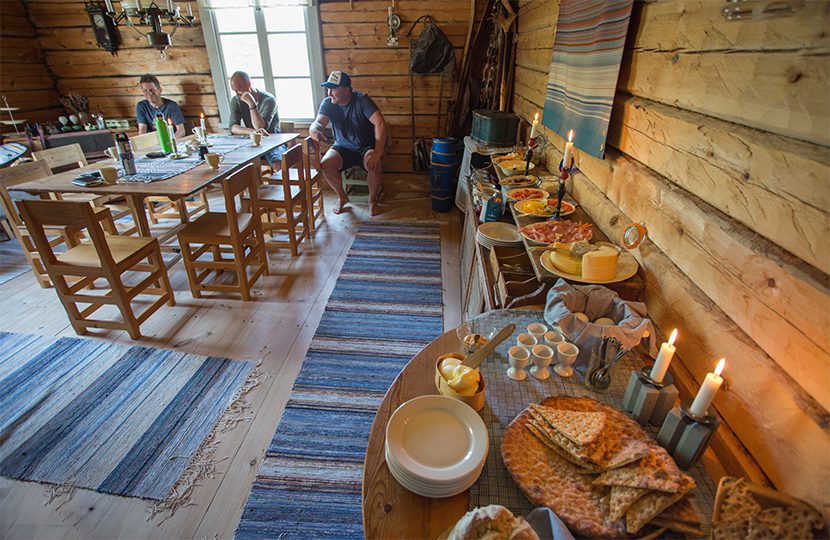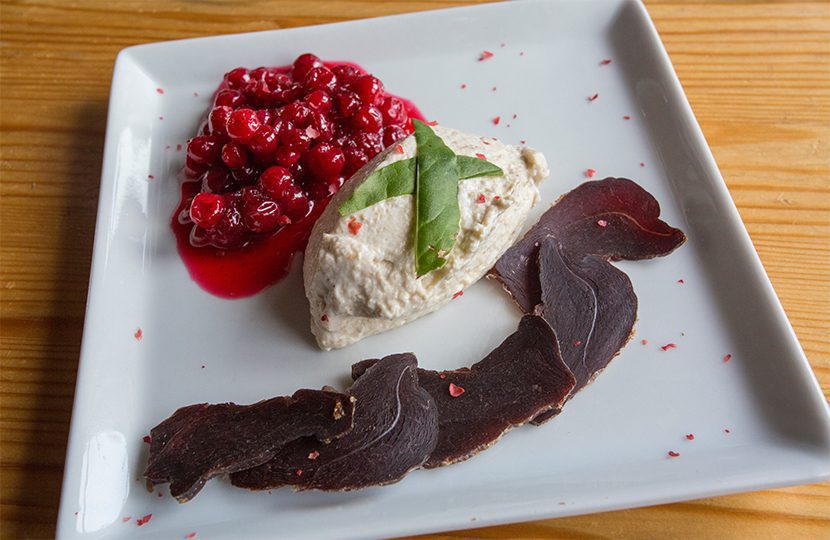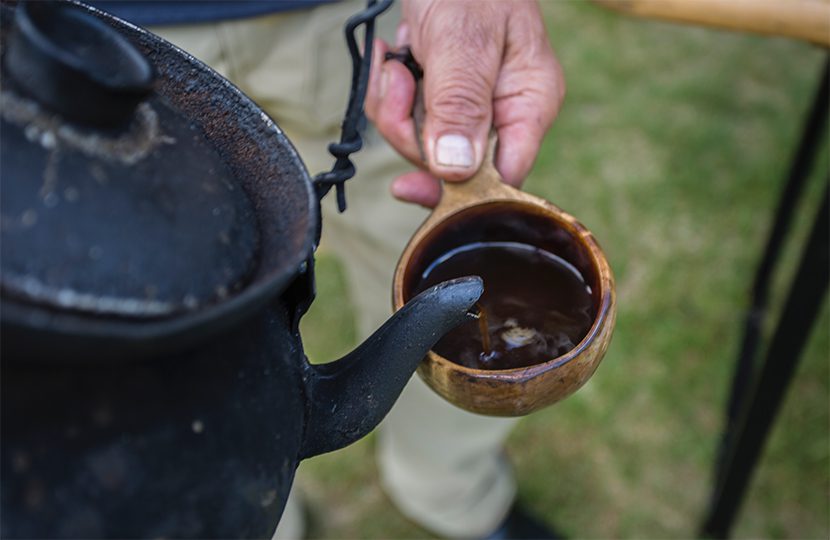Walking through the tundra lands of Swedish Lapland, the region’s respect and reverence for nature is evident. Swedes abide by the tenet of “Freedom to Roam” — the freedom for all citizens to explore nature,
[vc_row][vc_column width=”1/4″][vc_separator color=”black” border_width=”10″][vc_custom_heading text=”The slow food that defines the region”][vc_separator color=”black” border_width=”2″][vc_widget_sidebar sidebar_id=”sidebar-page”][/vc_column][vc_column width=”3/4″][vc_column_text]Walking through the tundra lands of Swedish Lapland, the region’s respect and reverence for nature is evident. Swedes abide by the tenet of “Freedom to Roam” — the freedom for all citizens to explore nature, to roam free in the country’s woods, forests and tundra — a law that, in turn, has developed the regional culture. And, as in any outdoors-oriented region, the local cuisine has evolved to support these pursuits.
The diet of the indigenous, nomadic reindeer herders of the region, known as the Sami, is dictated by the place itself. Local cuisine relies heavily on the tundra and the creatures upon it; reindeer, game birds and local fish such as trout, grayling and whitefish are featured heavily in the cuisine, served dried, fresh and every way imaginable.
Bierggojubttsa, a traditional soup with meat (often reindeer), potatoes, carrots and other root vegetables, is an example of a traditional, hearty meal that can readily be prepared on a rural farm but also is served in trendy restaurants in northern towns such as Kiruna. Outdoor adventurers who visit the fishing camp of Tjuonajokk, accessible only via a helicopter ride or long hike from Kiruna, will find Chef Tim in the kitchen, creating excellent, restaurant-quality meals using basic ingredients sourced locally and from the surrounding tundra.[/vc_column_text][/vc_column][/vc_row][vc_row][vc_column][vc_column_text]
Gáhkku, the Sámi flatbread, is usually cooked over an open fire and served alongside most meals, as is the ubiquitous coffee, served in a guksi, the traditional Nordic drinking cup. While staying at the Sami eco-lodge of Guenja, visitors can experience the hospitality of Mikael and AnkiVinka, who craft sustainable, hearty meals as the Sami have for generations — over a fire in a simple log cabin.
Sustainable, fresh and healthy, the food of the Sami is quite simple yet showcases the fresh ingredients that are often hand-harvested from the sweeping, marshy tundra and the cold, wild rivers that run through it. The meals pay homage to the region’s rich Sami history while also celebrating a continual love affair with the outdoors and the cuisine it provides on a seemingly harsh landscape.[/vc_column_text][/vc_column][/vc_row][vc_row][vc_column][vc_column_text]

Meals are served inside the main cabin at Guenja
[/vc_column_text][/vc_column][/vc_row][vc_row][vc_column width=”1/4″][/vc_column][vc_column width=”3/4″][vc_column_text]This is “slow food” at its most elegant — unique flavours best enjoyed slowly, to be relished, in the very environment from which they came. Whether on the tundra enjoying a glass of wine and reindeer stew at the fine Mat &Dryk at Hotel SPiS in Kiruna, the food alone is reason enough to travel to the Arctic Circle and live as the Swedes do. Jess McGlothlin
Tjuonajokk fishyourdream.com/en/locations/tjuonajokk
Guenja swedishlapland.com/place-story/geunja-sami-ecolodge/ ◼[/vc_column_text][vc_basic_grid post_type=”ids” element_width=”12″ initial_loading_animation=”none” grid_id=”vc_gid:1539883319041-616472c8-701d-6″ include=”13437″][vc_column_text]
Subscribe to the latest edition now by clicking here.
© This article was first published in Oct-Nov 2018 edition of World Travel Magazine.
If you would like to comment on this story or anything else you have seen on World Travel Magazine, head over to our Facebook page or message us on Twitter.
And if you liked this story, subscribe to our bi-monthly World Travel Magazine, a handpicked selection of editorial features and stories from Global Destinations, Inspire Me, Insider, Style File, Wellness & Travel, City Travel, Suite Life, At Leisure, Short Breaks and much more.[/vc_column_text][/vc_column][/vc_row][vc_row][vc_column][vc_masonry_grid post_type=”post” max_items=”9″ style=”load-more” items_per_page=”9″ gap=”10″ grid_id=”vc_gid:1539883319047-5f3f5435-5e48-6″ taxonomies=”1658″ exclude=”15205, 14466, 11296″][/vc_column][/vc_row]









